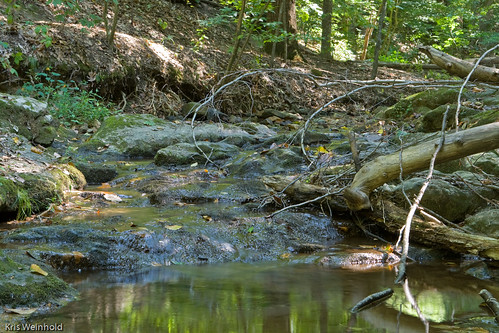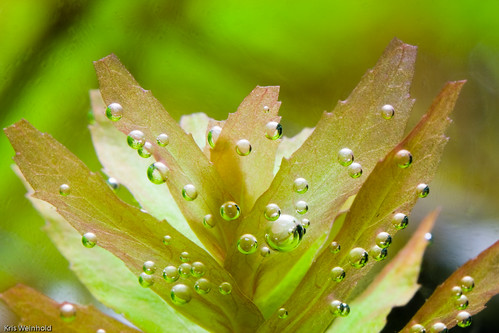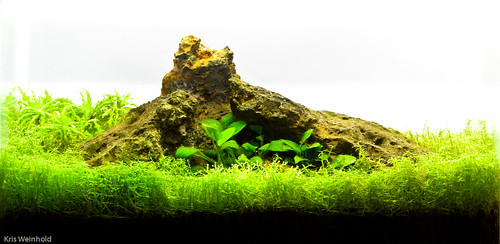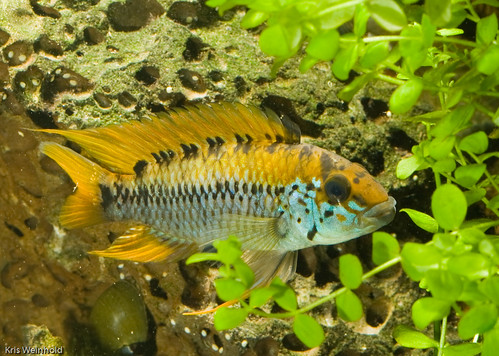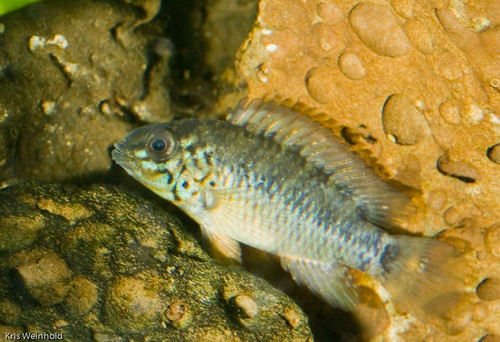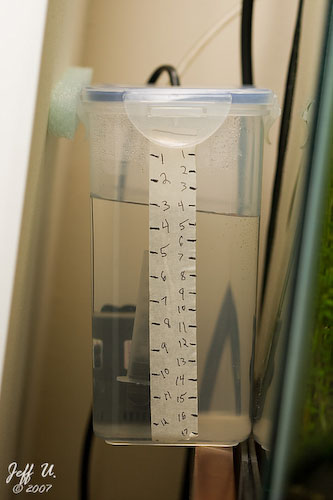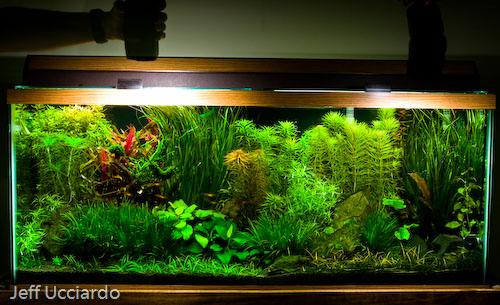This weekend, my wife and I took a short hike through a very small section of Patapsco Valley State Park in Elkridge, Maryland. I had seen a few pictures on Flickr showing a beautiful cascading waterfall off of one of their trails. We decided to go and try to get some pictures of our own. Unfortunately, the low water levels created a much less impressive waterfall, but we still had a great, relaxing, time visiting the park.
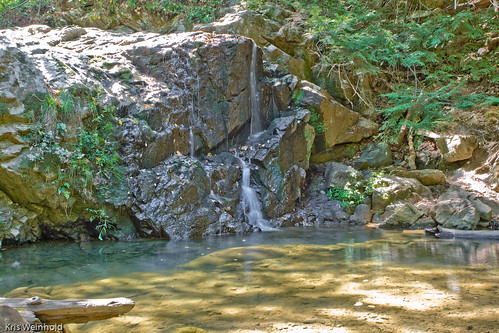
We were happy to find a number of smaller waterfalls up and down the area from the main falls. In many ways, I found the smaller waterfalls more interesting than the main one. One thing I did notice is that the pools underneath the waterfalls contained very little wildlife besides some common water bugs.
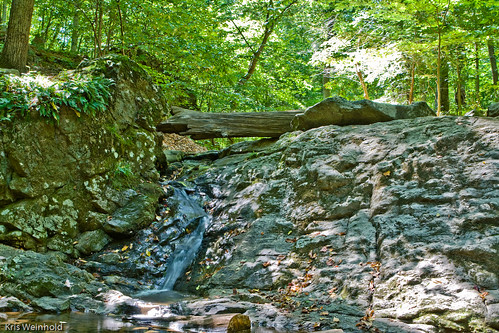
Upstream, however, was a different case. In areas with more vegetation on the banks, we spotted several large schools of fish, newts, and frogs hopping from the banks into the water on our arrival.
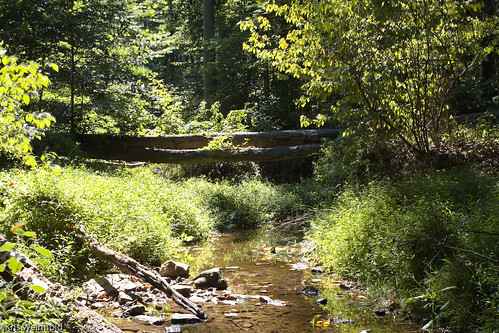
The creek itself was quite barren of plant life, containing only a rocky/sandy substrate. The small fish, which I believe could be blacknose dace, persistently tried to take cover in the shadows under rocks, but their shear numbers made that a laughable endeavor.
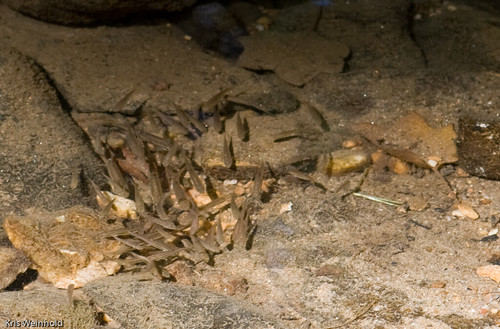
Throughout the watershed, I spotted a large number of Polygonum-looking plants, but none of them submersed. I suspect this is due to the shady habitat of the forest, the fast-moving current in the streams, and the barren rocky substrate in the water.
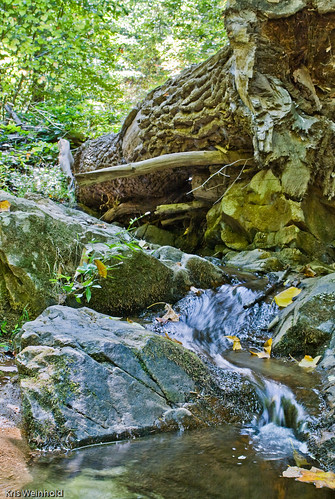
The forest itself is quite beautiful, with huge moss-covered rocks providing the stronghold for trees to take root along the waterside. I was happy to see that the trails themselves were not littered with significant garbage or human impact, detracting from the natural setting.
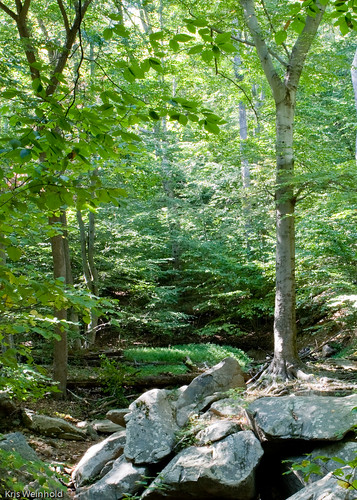
Besides the already mentioned wildlife, we spotted several butterflies, spiders, and even some whitetail deer. One tree branch (below) was covered a cotton-like substance, that upon closer inspection turned out to be some sort of insect larvae/pupa. If anyone can identify these guys, I’d be grateful.
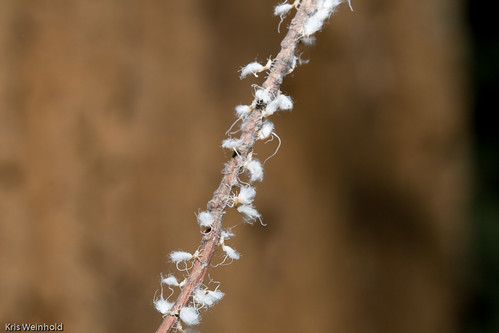
Patapsco Valley State Park is a large area of land stuck right in the middle of overdeveloped areas of Baltimore and Howard counties. We really only experienced a very small section of the park. I’m sure we could spend an entire summer hiking through all of the trails without seeing everything there. I hope to do some more exploring of the trails, and most of all, hope to get some more waterfall pictures when the water levels are more impressive.
